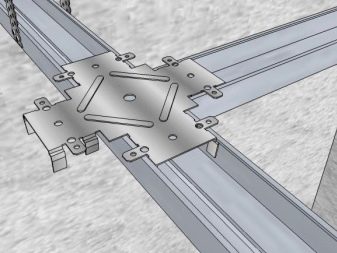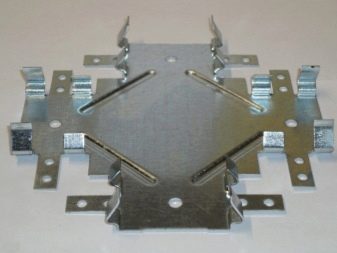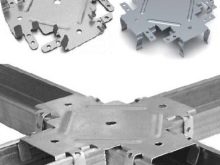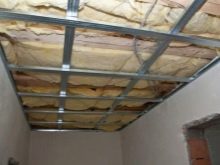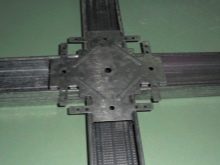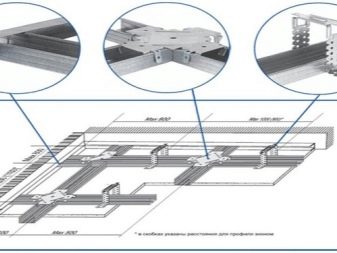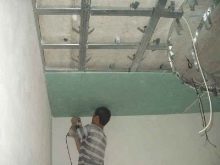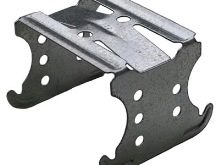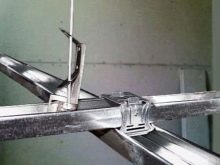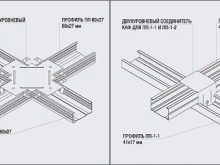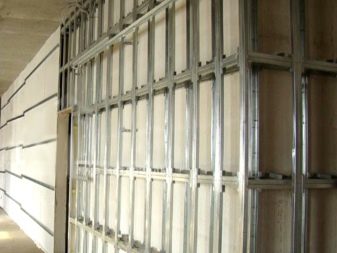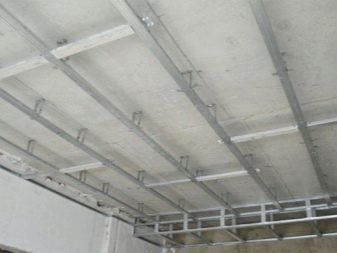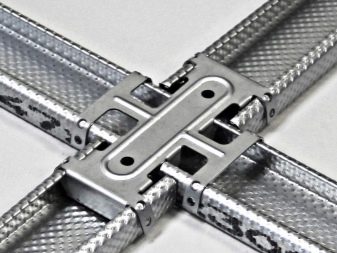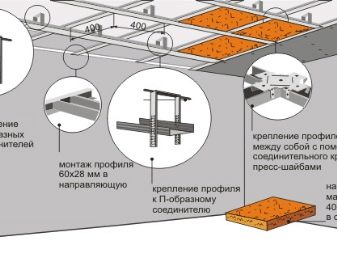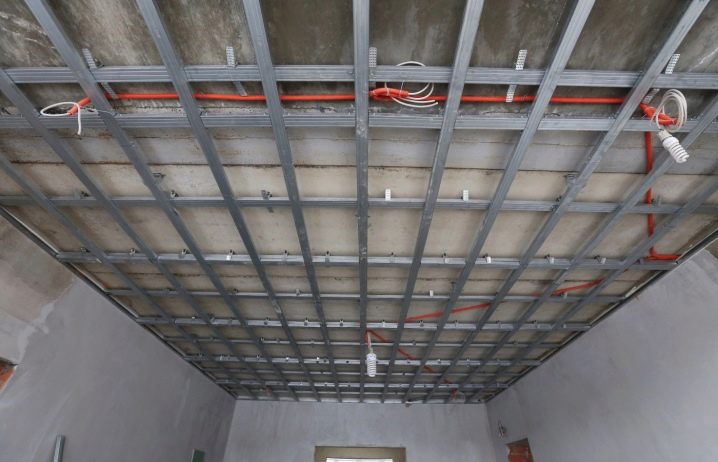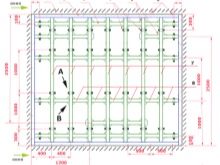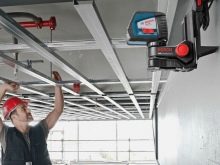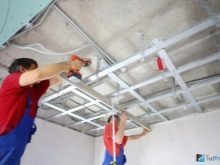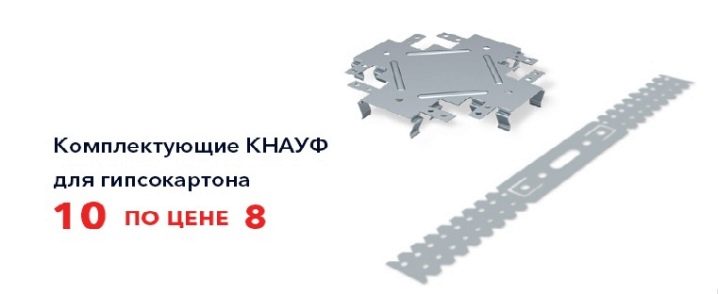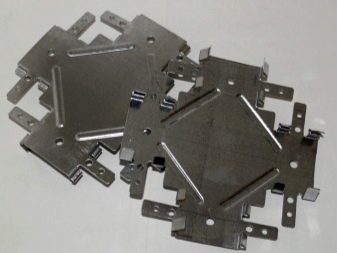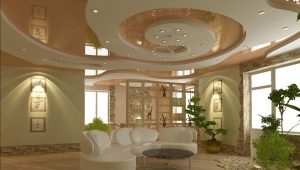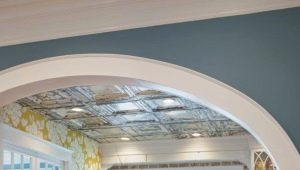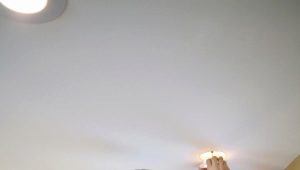Drywall Crab: Pros and Cons
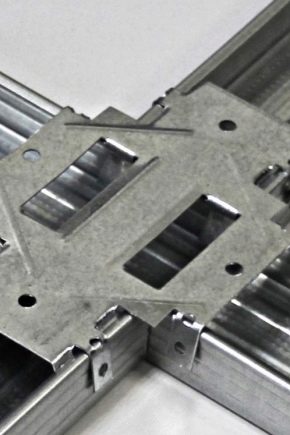
Drywall sheets are often fastened with crabs, which are best suited for joining such materials. Consider the basic principles of working with such fasteners, their types, as well as the pros and cons of their use.
Features and benefits
Crabs are used to install metal bases, no matter how complicated they are. To understand the correct use of fasteners is to understand how to create a metal base.
Most often, the construction of drywall is fixed on the basis of metal. As such a framework, an iron lattice is usually used, which is a kind of spinal analogue for construction. That it becomes a support for walls, partitions, ceiling, and so on.
Sometimes drywall sheets are simply glued, in this case, the base is not required.But this method is acceptable only when the surface is fairly flat. Otherwise, fasteners are applied to the metal frame.
The basis for the frameworks, as a rule, are guides and rack profiles. Sometimes also wood frames may be used, but they may not be used in all designs. All metal profiles require fasteners.
In this capacity, you can use screws, dowels or screws. However, these fasteners are inferior in reliability crabs. You can also use a proskatel. He is quite capable of replacing the crab, but such fasteners are outdated. This causes their low popularity.
Crabs are recognized as the most modern, practical and convenient option.
When using them, the duration of installation work is significantly reduced. Fastening the base with fasteners in the form of crabs provides the structure with a sufficient level of strength. In addition, these parts are fairly flat, so they do not form drops and protrusions.
The advantages of using such fasteners:
- can be mounted on large areas;
- when using a single-level crab, a rather rigid frame construction is obtained, so you can not worry about large static and dynamic loads;
- very often with the help of crabs connect suspended ceilings, this is one of the most suitable for this design fasteners.
Thus, the main advantage of crabs compared to other similar fasteners is their reliability. Also a positive point in the choice of such fasteners is an affordable price. Thanks to the combination of these two qualities, crabs are so popular in the construction market today.
Types of fasteners for gypsum boards
There are two-level and single-level types of fasteners. Single-level use to connect the drywall on the same line. Such fasteners occupy one level and are located perpendicularly. The thickness of the parts is slightly less than a millimeter. Fasteners need to click on the profile. At the same time it is necessary to calculate the load. If you exceed twenty kilograms per square meter, you must additionally fix the profile with self-tapping screws.
Two-level is used to connect profiles that occupy different levels. This is their fundamental difference from the previous type of fasteners. To secure a two-level crab, you should install two screws on each side.
When selling such parts unfold. Therefore, prior to installation, each fastener must be bent so that it takes the shape of the letter P.
Efficiency
With the help of the considered devices it is possible to create a reliable and effective fastening, which strengthens the strength of the structure.
The functionality of the crabs is obvious:
- With their help, they fix the gypsum plasterboard regardless of the plane in which they are located.
- The use of such fasteners is independent. At the same time fastening turns out simple and most reliable.
- Such parts have a high level of strength, which is ensured by a special design.
It is important to note that all connectors should be distributed evenly on drywall.
Application
Crabs are used for:
- connections of elements of suspended ceiling structures;
- fixing the frame for plasterboard walls and partitions.
Consider step by step how to install crabs:
- it is necessary to take the fastener so that its antennae are directed downwards;
- crabs are put on the metal profile until it clicks;
- after that each of the antennae of the crab must be bent and fastened;
- then jumpers are mounted.
The strength of the frame will depend on whether the fasteners are installed in the right quantity and in the right places.
Location Features
Effective execution of fastener tasks is possible only when each of them is located in the right place.
In order for the base to be reliable and serve for a long time, it is necessary to take into account some features:
- careful calculation of the location of fasteners, so that the frames and plasterboard sheets will be secured in the most reliable way;
- early creation of the scheme, due to which the installation of fasteners will be more simple and fast (the scheme should reflect the places where the parts will be located);
- ensuring the reliability of fastening with the help of special screws, which are also called klopikami;
- the inadmissibility of any work before fixing fasteners.
How to choose?
Creating a metal frame - a very important event. Shortcomings and mistakes can lead to serious problems. The construction of drywall can be deformed and even come into disrepair. The same applies to the careful selection of components. Reliability and durability of the structure depends on their quality.
Some brands are especially popular in the fastener market. (for example, the well-known company Knauf from Germany). They occupy a leading position due to the high quality of their products, which is confirmed by numerous positive reviews.
Responsible manufacturers take into account all the nuances (the possibility of changes in temperature and humidity in the room, various types of base coating, etc.). This is really important, because fasteners must be resistant to adverse external influences.
For example, some companies use a galvanized layer to further protect parts, take into account adhesive characteristics, provide anti-corrosion effect to the coating. At the same time, good manufacturers are also concerned with how the part looks. The cost of components depends on the brand, but usually it is quite affordable.
For information on how to connect the СD60 profile using a crab, see the following video.
